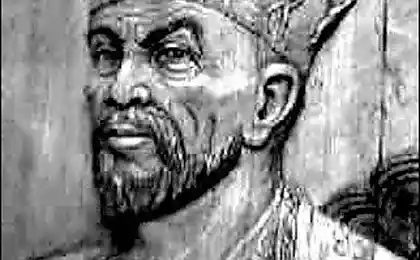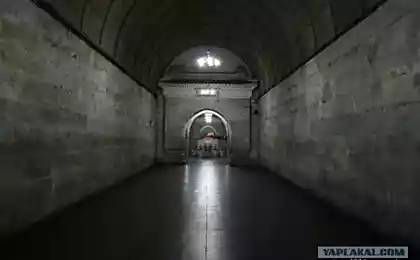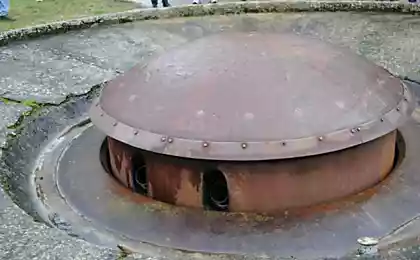719
In France, the tomb unearthed priceless Celtic prince
Let's look at the tomb of the ancient keltaMogila was filled with many Greek and perhaps Etruscan artifacts.
The prince was buried with his chariot in the middle of a huge mound, a 40-meter burial mound, while keeping intact the 5th century BC. e.

The largest find was decorated with bronze cauldron used to store wine. The tomb was found and ceramic jug of wine, made by the Greeks.
The burial chamber is one of the largest found tombs of this period.
Vault of the Celtic Prince Iron Age discovered in a small French town. Unique grave crowded Greek and Etruscan artifacts was discovered in a shopping area on the outskirts of the town of Lavaux in the French region of Champagne.
Prince buried with chariot in the middle of a huge 40-meter-high mound, dating back to the 5th century BC. e.
A team of archaeologists from the National Archaeological Research Institute (INRAP) conducts excavations since October last year.
Recently, they have dated the find end of the first Iron Age - a period characterized by the extensive use of metal.
The researchers believe that this discovery could shed light on the European trade in the days of the Iron Age.

At the heart of the 2500 year old burial chamber of the mound is a person of ancient royal family of 14 square meters, which is not yet open.

"It's probably a local Celtic prince", - he told reporters the president of INRAP Dominique Garcia during a visit to the excavation site. The most impressive finding, he said, was decorated with a large bronze cauldron, which was used for storage of wine diluted with water. Presumably, it was made by Etruscan craftsmen from the region, on the territory which is now modern Italy.

Four round handle decorated with bronze heads of the boiler Achelois, the Greek god of the river with horns, beard, ears of a bull and triple mustache.
The edge is decorated with eight goals boiler lionesses.

The tomb was found also decorated ceramic wine jug made by the Greeks. On the vessel depicts the god Dionysus, with a woman lying under a vine. In addition, archaeologists have found the remains of the iron wheels of the chariots, buried with the prince.

Another interesting discovery was perforated silver spoon, which was part of a set of dishes for banquets, and, apparently, was used for straining wine.

Garcia said that this discovery is proof of the existence of trade exchanges that took place between the inhabitants of the Mediterranean and the Celts.
The staff of the Archaeological Institute argue that this burial chamber is one of the largest discovered tombs of this period.

At the end of VI - the beginning of the V centuries. BC. e. necessary to increase the Etruscan and Greek city-states, such as Marseille in the south of France. Mediterranean merchants in search of precious metals and other commodities as well as slaves established trade links with continental Celts. As a result, the Celts got valuable objects of Greek and Etruscan origin. Many of them have been found in other mounds in Hoyneberge and Hochdorf in Germany.

Researchers say that the excavations will be completed later this month.
via www.dailymail.co.uk/sciencetech/article-2983404/Massive-tomb-Celtic-prince-unearthed-France-Exceptional-2-500-year-old-burial-chamber-reveals-stunning-treasures.html?ITO=1490&ns_mchannel=rss&ns_campaign=1490
The prince was buried with his chariot in the middle of a huge mound, a 40-meter burial mound, while keeping intact the 5th century BC. e.

The largest find was decorated with bronze cauldron used to store wine. The tomb was found and ceramic jug of wine, made by the Greeks.
The burial chamber is one of the largest found tombs of this period.
Vault of the Celtic Prince Iron Age discovered in a small French town. Unique grave crowded Greek and Etruscan artifacts was discovered in a shopping area on the outskirts of the town of Lavaux in the French region of Champagne.
Prince buried with chariot in the middle of a huge 40-meter-high mound, dating back to the 5th century BC. e.
A team of archaeologists from the National Archaeological Research Institute (INRAP) conducts excavations since October last year.
Recently, they have dated the find end of the first Iron Age - a period characterized by the extensive use of metal.
The researchers believe that this discovery could shed light on the European trade in the days of the Iron Age.

At the heart of the 2500 year old burial chamber of the mound is a person of ancient royal family of 14 square meters, which is not yet open.

"It's probably a local Celtic prince", - he told reporters the president of INRAP Dominique Garcia during a visit to the excavation site. The most impressive finding, he said, was decorated with a large bronze cauldron, which was used for storage of wine diluted with water. Presumably, it was made by Etruscan craftsmen from the region, on the territory which is now modern Italy.

Four round handle decorated with bronze heads of the boiler Achelois, the Greek god of the river with horns, beard, ears of a bull and triple mustache.
The edge is decorated with eight goals boiler lionesses.

The tomb was found also decorated ceramic wine jug made by the Greeks. On the vessel depicts the god Dionysus, with a woman lying under a vine. In addition, archaeologists have found the remains of the iron wheels of the chariots, buried with the prince.

Another interesting discovery was perforated silver spoon, which was part of a set of dishes for banquets, and, apparently, was used for straining wine.

Garcia said that this discovery is proof of the existence of trade exchanges that took place between the inhabitants of the Mediterranean and the Celts.
The staff of the Archaeological Institute argue that this burial chamber is one of the largest discovered tombs of this period.

At the end of VI - the beginning of the V centuries. BC. e. necessary to increase the Etruscan and Greek city-states, such as Marseille in the south of France. Mediterranean merchants in search of precious metals and other commodities as well as slaves established trade links with continental Celts. As a result, the Celts got valuable objects of Greek and Etruscan origin. Many of them have been found in other mounds in Hoyneberge and Hochdorf in Germany.

Researchers say that the excavations will be completed later this month.
via www.dailymail.co.uk/sciencetech/article-2983404/Massive-tomb-Celtic-prince-unearthed-France-Exceptional-2-500-year-old-burial-chamber-reveals-stunning-treasures.html?ITO=1490&ns_mchannel=rss&ns_campaign=1490























